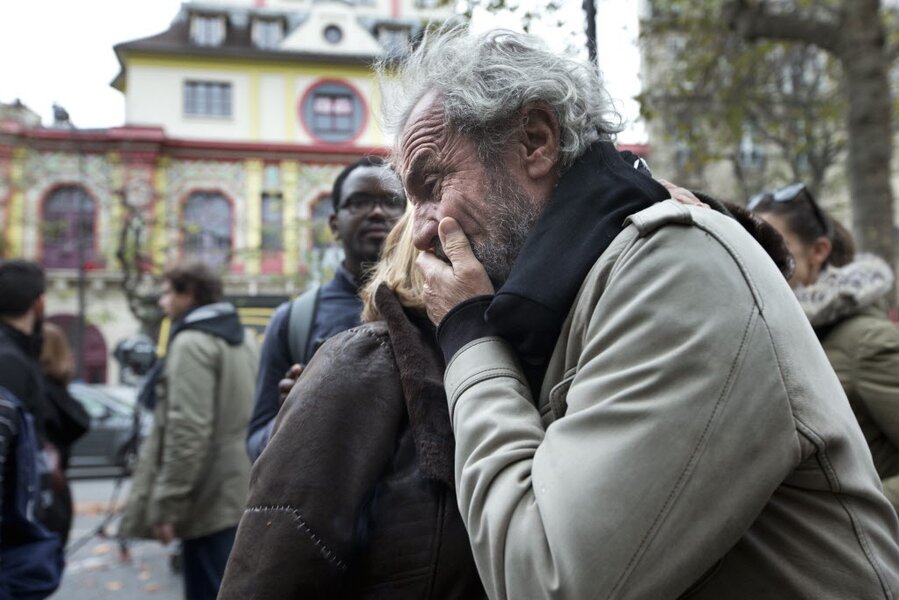Have we re-entered a 'keep calm and carry on' era?
Loading...
In preparation for World War II, the British government created a slogan in 1939 made to raise the morale of the British public: Keep calm and carry on. Over 2.45 million copies of the now-famous motivational slogan were printed and brought the country through the Blitz that lasted eight months and killed 43,000 civilians.
The day following the deadly Paris attacks, France, along with the rest of the world, awoke in a state of shock. President François Hollande declared the country in a state of emergency, borders were closed, and French newspapers headlined with “This time it’s war.” Reactions following the attacks varied. In places where citizens couldn’t offer immediate aid to France, they showed their condolences through color: Major monuments from Brazil to Mexico to the United States were lit up in blue, white, and red. The Eiffel Tower went dark.
But in Paris, echoes of “keep calm and carry on” reverberated around the city. As The Economist reported, there was “a sense of defiant normalcy.” While shops, restaurants, schools, museums, libraries, town halls, gyms, and markets were closed, “locals were trying to go out and about as usual.” One man was found fishing on the Seine, a spot he usually avoids but decided to occupy in protest. Others waited in line to donate blood.
Still, Parisians are quietly grieving. The Christian Science Monitor’s Sara Miller Llana writes:
"Pierre Cappelaere and his girlfriend Elisa Guffens, both in their early 20s, live in the area and were just down the road from La Belle Equipe on Friday night. They are still visibly shocked, containing tears as they come to render their tribute to the café, now closed and adorned with a spread of flowers and candles that continues to grow. They repeat the words that are too often heard among their group. Says Ms. Guffens: “We all know someone who knows someone." "
The “keep calm and carry on” era of World War II may have passed, but its message has manifested itself in 21st-century tragedies. Following the Boston bombings in 2013, the phrase Boston Strong immediately emerged as an unofficial slogan for the city. It became such a popular saying that it was plastered on bumper stickers, bracelets, and t-shirts – selling over 37,000 shirts in the first week. Boston Strong became such a popular phrase one reporter had the nerve to tweet he was tired of it. He was attacked.
Islamist violence has become a serious and very grave problem for Europe this past year, causing many to fear a new kind of “homegrown" terrorist. In February, dozens of rounds were fired into a café in Copenhagen during a debate on free speech. Denmark also houses Jyllands-Posten, a radical newspaper that began publishing satires on Prophet Mohammed and was the subject of a foiled terrorist attack in 2010. In June, a Frenchman was decapitated in a factory in Lyon. Two United States military personnel stopped another attack by an armed Islamic extremist on a Thalys high-speed train in August.
Preventing homegrown terrorism has become the concern of politicians and governments all around the world. But keeping calm and carrying on – that's something left to the citizens.








